On the Road with Domovina Birthright Program: Dalmatia
August 14, 2019 - As previously reported on TCN, the first Domovina Birthright Program took place in Croatia last month, an initiative between the American Croatian Association of Professionals, and the Croatian Government.
The idea of the program is to take the young adults of Croatian descent (ages 18 – 30), who wish to learn about their heritage, explore Croatia, connect with their Croatian identity and meet other young Croatian adults on an amazing trip to Croatia.
Kristiana Banđen is one of the 34 initial participants in the program, and she has kindly agreed to document her journey as she explores the country of her heritage. Over to Kristiana for Day 10-16:
The last 6 days of our trip were full on! On Day 10, we spent the morning driving to Zadar from Knin where we spent half the day exploring the city before driving to Šibenik.
I was excited to visit Zadar with the group because it is my favourite city (from all the countries I have visited) ever! Over the summers growing up, my family and I would stay with my aunt in Pakoštane and we would often spend days visiting Zadar, so it brings back a lot of great memories. I have always enjoyed jumping off the sea wall and sitting by the sea organs. I was happy to visit all my favourite spots during our guided walking tour. After our walking tour, we visited Rector’s Palace for a lecture, exhibition and lunch before driving to Šibenik.
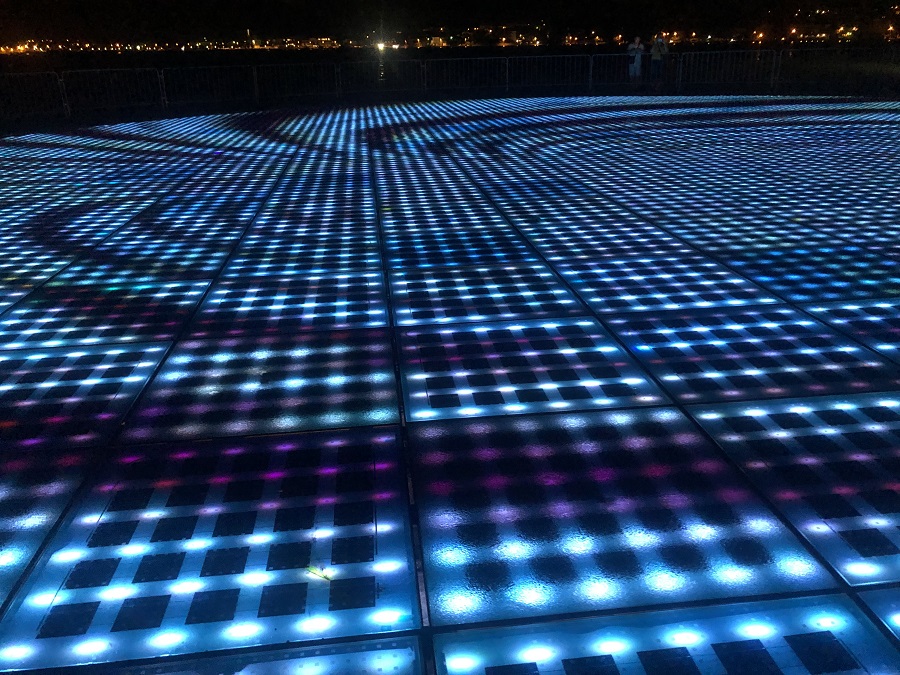
When we arrived in Šibenik we had another walking guided tour of the city which I really enjoyed, our tour guide was great and Šibenik is such a beautiful city! It’s a city I’ve visited as a child but have not spent a lot of time here. To end our tour, we visited the Fortress of St. Mihovil that has breathtaking views of the city. Luckily for us, when we were there, singer Tony Cetinski was in the middle of his dress rehearsal for his evening show at the Fortress.
We enjoyed dinner at restaurant Peškarija to end the day. Great food!
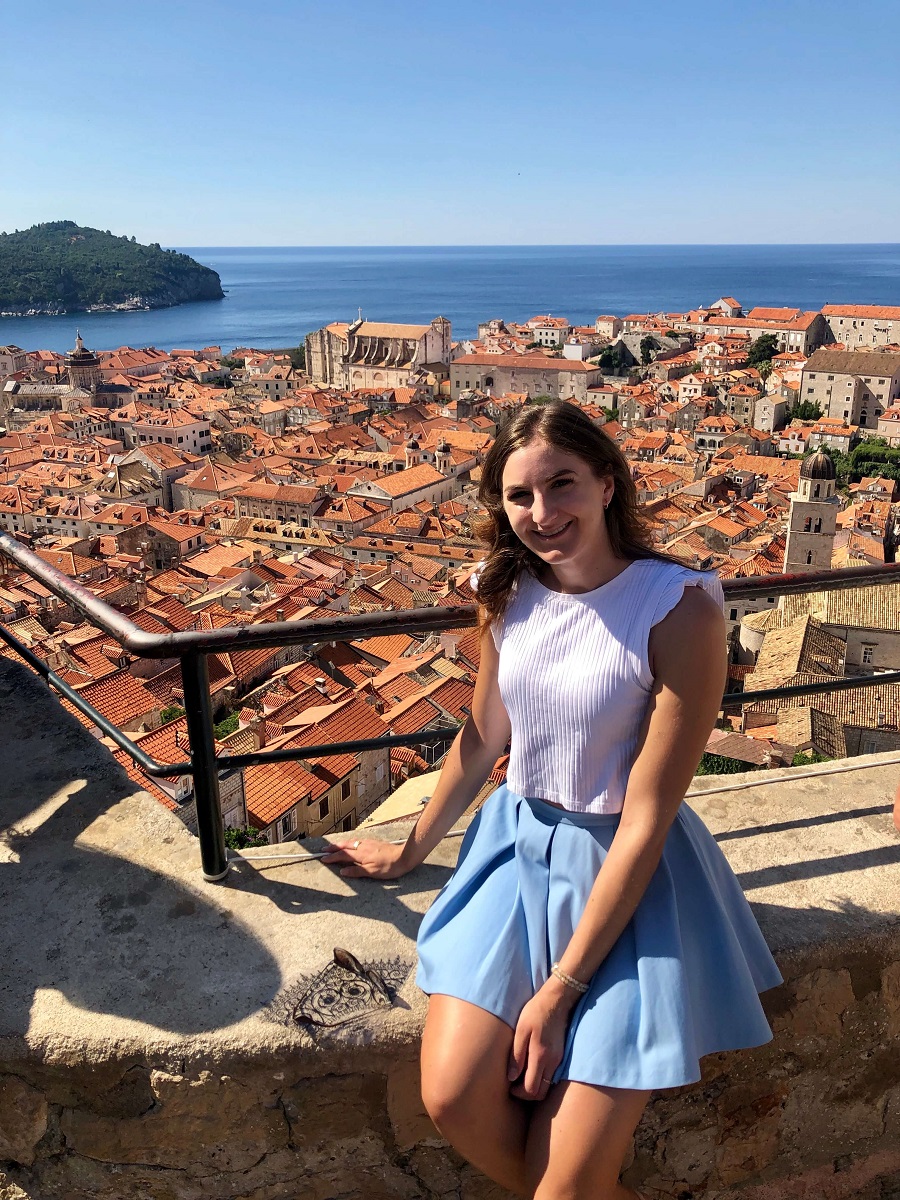
The next day, we visited Ivan Meštrović’s mausoleum in Otavice. It was really cool to see so many of the sculptor’s creations throughout the trip. The mausoleum was beautiful, and I highly recommend visiting if you have the chance to! Next, we drove to Imotski, where we enjoyed lunch and the artwork at the Don Ivan Turić’s museum. We explored the city and visited the Blue and Red Lakes. I never even knew Croatia had an attraction like this, I really enjoyed seeing the lakes. Dugopolje was our stop for dinner before ending our day in Split, where, we spent the next 2 nights. Our lodging throughout the trip was mostly in dorms and I really enjoyed sleeping in the student dorms at the local universities. It made our experience in Croatia feel more like a local than a tourist.
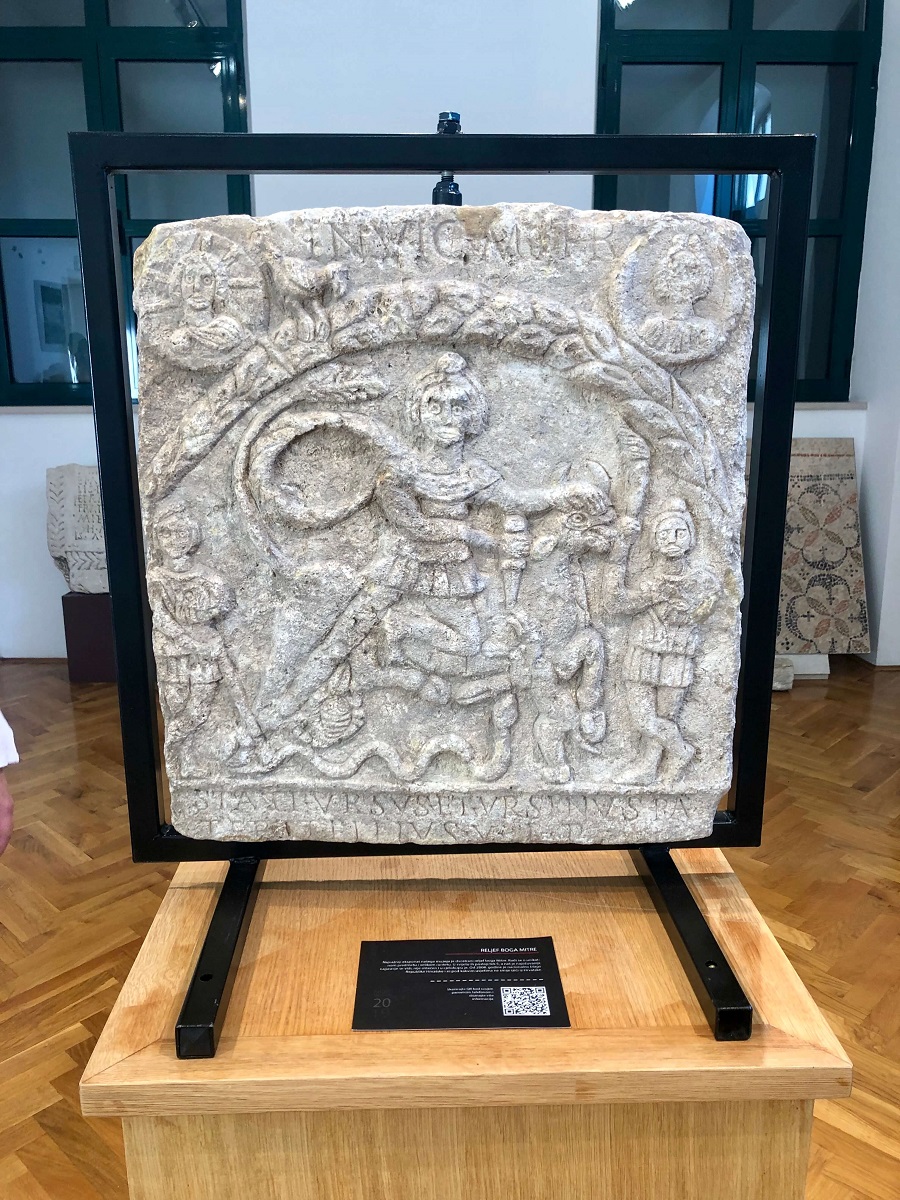
The start of our tour in Split began at the University of Split for a lecture and tour of the campus. There are so many courses offered in English at all the universities we visited in Croatia. Although I finished my studies, it was interesting to hear that there are so many opportunities to study in Croatia and what each university offered. Following our university tour, we had a walking tour of the city centre of Split. Split is another favourite city of mine, so I enjoyed having some free time for shopping and swimming! Afterwards we visited the Ivan Meštrović gallery. I love touring galleries and this one didn’t disappoint. His work is amazing, especially the meanings behind them, which was nice to hear from our guide. Following the gallery, we walked over to Velum for dinner.
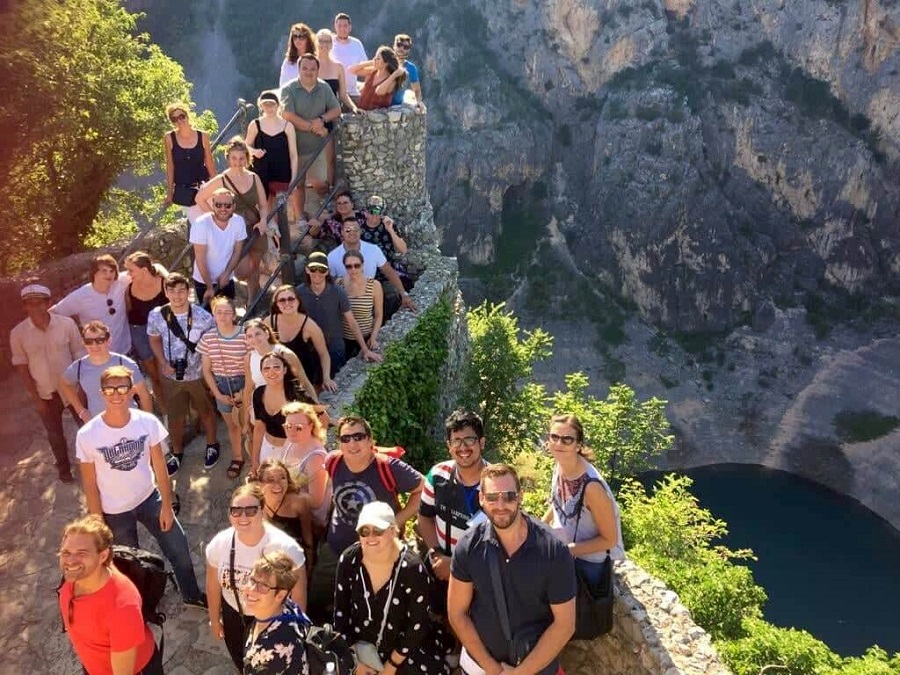
Last, but not least, the last two days of our trip! From Split, we travelled to Dubrovnik by ferry. After the 5-hour trip in the Old City, we right away jumped onto the ferry to the island of Lokrum where we were greeted upon arrival and walked over to lunch. After lunch and some free time to swim, we toured Rector’s Court back in the Old City and stayed in the centre for dinner.
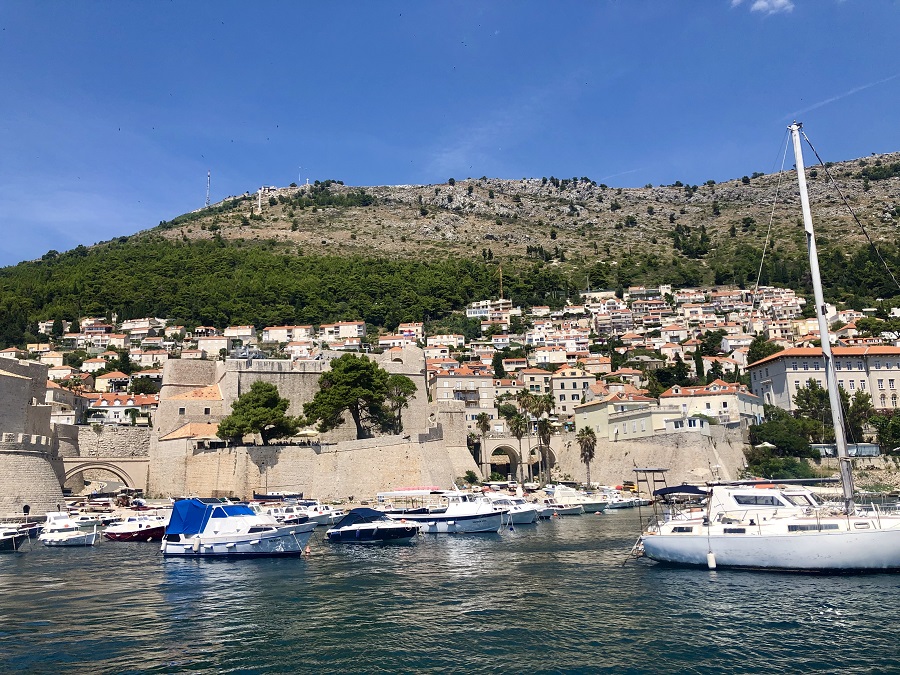
The following two days in Dubrovnik concluded our Domovina trip. Throughout the last two days, we had a private walking tour of the city, walked the city walls, viewed the sunset at the top of the city by cable car and visited Cavtat. I have previously visited Dubrovnik when I was really young, that I don’t even remember, so it was great spending a couple of days here with the group. The Old City of Dubrovnik is beautiful, and the walls of Dubrovnik walk is a must do to take in all the sights. I’m glad we had our tour early at 8am. The city gets unbelievably packed after 10am and in the afternoon, it’s almost impossible to walk. For this reason, I really enjoyed being able to visit Cavtat. It’s the perfect location close to Dubrovnik for some peace and quiet, not overcrowded like the Old City. Cavtat is already on my list of cities to return to!
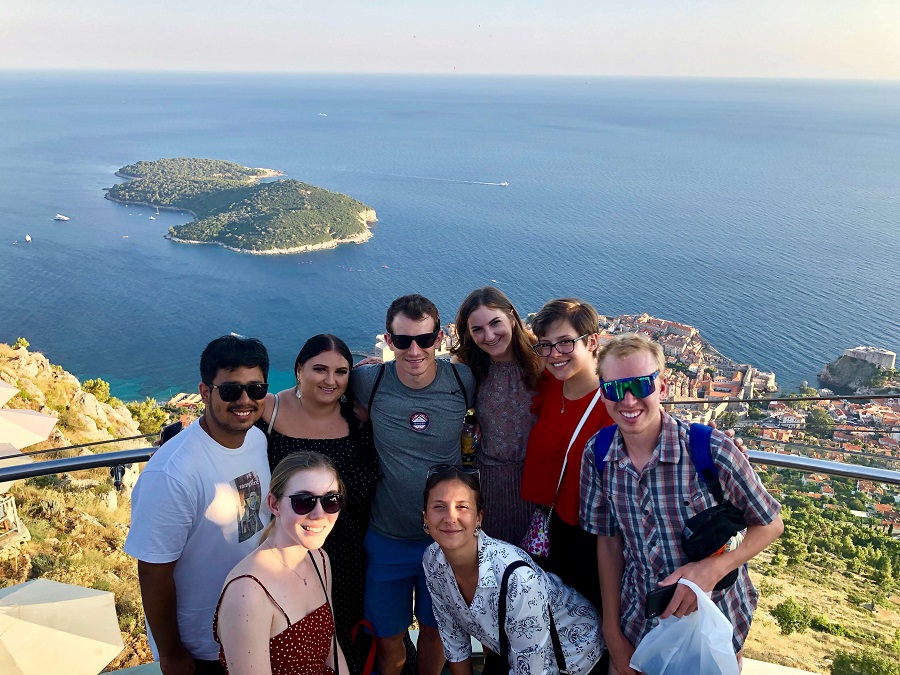
As Domovina 2019 has ended, I had some time to reflect on the experience. I am truly grateful and appreciative that a program like this was introduced and that I was chosen as part of the members of the first year to attend. Throughout the trip I was able to see, visit and learn so much more of my country that I never knew of. I knew quite a bit about the Croatian culture because as a child I was actively involved in the Croatian community in Vancouver as well as having travelled to Croatia. I was already so proud to be Croatian, but this trip made me appreciate it more. We were able to meet with many politicians and members of the government who made us feel very welcomed. Hearing the excitement from them, about us being here, reflected on the importance of young Croatians from outside of the country to visit, see their roots and uphold our culture and language. All 33 of us (participants) now have a better understanding of our amazing culture and country, which we all brought back to our native homes. The warmth we felt throughout the trip was a feeling of home that we will always cherish and remember.
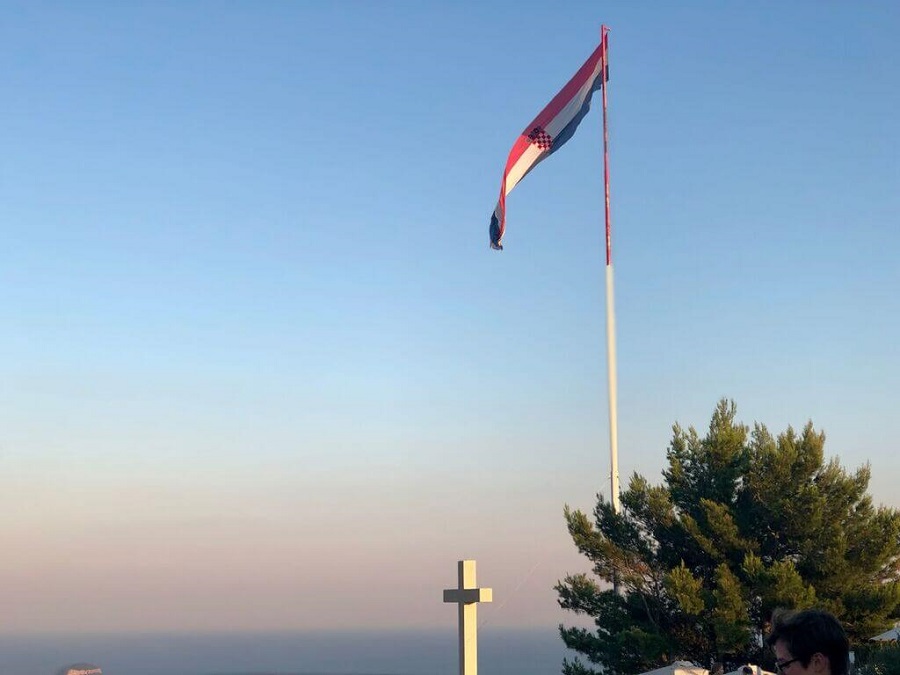
If you are interested in being a part of the group next year or in the future, we (and I speak for everyone who attended) highly recommend this experience. It will open your hearts and eyes to your heritage and the experience with others your age from around the world is truly unique and unlike any other. I have memories to cherish a lifetime!
To follow the latest news from the Croatian diaspora, follow the dedicated TCN section.
Record Heatwave on the Horizon? Adriatic Coast on Red Alert
August 12, 2019 - If you thought Sunday was hot on the Adriatic Coast, the worst is yet to come as the peak of summer brings brutal temperatures along for the ride.
Although the end of the meteorological summer is still a month and a half away, it looks like the two hottest days of this summer are right ahead, reports Dalmacija Danas.
On Sunday, some parts of Dalmatia measured uncomfortably high temperatures. For example, the highest daily air temperature in Knin was 39.3°C, Ploče and Resnik 38°C, and Zemunik 37°C.
However, the new week begins with a warning from DHMZ, who issued a red alert for the entire Adriatic due to the heat. Namely, this is the highest warning level within the MeteoAlarm system.
If the next two days will break temperature records remains to be seen, but we do know that you’ll want to park yourselves under the air conditioning for as long as you can.
Monday will be sweltering and muggy. The skies will be clear while the wind will be weak or completely absent. The minimum morning air temperatures will range from 18°C somewhere in Zagora (Inland Dalmatia) to 30°C somewhere along the coast. The highest daily temperatures will range from 33°C on the high seas to 40°C in Zagora.
Tuesday will be mostly clear, though the afternoon in Inland Dalmatia will see moderate to increased cloud development in some areas, with a slight chance of rain showers. It will be quiet or with a light breeze. The morning will be hot with maximum daily temperatures from 33 to 40°C.
A weakened weather front will bring only slightly more variable weather on Wednesday. It will be partly sunny, with occasional cloudy skies. In the second part of the day, there will be light showers with thunder, mostly in southern Dalmatia. There will be a light to moderate bura in the morning and evening and in the daytime, light winds of different directions. It will be a little fresher with maximum daily temperatures between 29 and 35°C.
On Thursday it will be partly sunny, with the occasional moderate clouds and dryness. There will be a light bura wind in the morning, and during the day, a light breeze from the west. The evening and morning are much more comfortable than in the previous days, with maximum daily temperatures between 27 and 32°C.
Friday, Saturday and Sunday will be mostly sunny and dry. The wind will be weaker; in the evenings bura, in the daytime maestral. The nights will be comfortable, with maximum daily temperatures from 27 to 32°C, and a little higher on Sunday.
You can follow updates from DHMZ here.
To read more about news in Croatia, follow TCN’s dedicated page.
Dalmatian Windsurfing Genius Achieves Prestigious Meme-Status
The hit Croatian satirical Facebook Page Daily Dose of the Average Dalmatian (Dnevna doza prosječnog Dalmatinca) has been supplying us with priceless content for years, making us laugh during the times when we really need a good, honest laugh.
Recently, they published a photo of a guy who had come up with an innovative method of windsurfing on his board, see it here. The photo was a hit, with over 13 thousand likes and more than a thousand shares, and apparently, it made its way to some people on the internet who don't really have much to do with Croatia, but they do know something about - the meme.
Imagine my surprise when scrolling through Facebook this morning, and in my timeline seeing this from Make Use Of, one of the world's biggest online publications that issue tips and guides on how to make the most of the internet, computer software, and mobile apps (founded in 2007):
While most certainly not a programmer myself, I can understand the joke in the meme and can appreciate that the image is very versatile and could be used to illustrate numerous similar situations. Additional bit of chuckle for anyone familiar with Jadrolinija comes from the fact that Make Use Of people compared Jadrolinija with "modern" frameworks/libraries, but OK, let's give them a pass with that one.
If the meme spreads, which is actually quite likely if it was already picked up by a medium with such large community, can you imagine the marketing potential it would hold for Jadrolinija and the Croatian Tourist Board? What do you think, will they be able to recognise and utilise it?
(The title is, of course, somewhat sarcastic. But not entirely, as it is fully possible that the individual in question did what he did only so he could become a meme. Or not. This is Dalmatia we're talking about, there's no way of knowing for certain.)
VIDEOS: Chaos on Streets as Summer Storm Rips through Split
August 3, 2019 - When the forecasts projected a change in weather this weekend, they weren’t kidding around. A look at how this summer storm swept through the Split area.
A rumbling thunderstorm with powerful and blustery winds ripped through the Split area around 10 pm on Friday. The air temperature dropped to just 19 degrees Celsius in a short time - for comparison, the highest daily temperature on Friday was 32 degrees Celsius, Slobodna Dalmacija reported.
“It came from the northwest and descended to Dalmatia. The announced front is crossing our area,” confirmed DHMZ in Split on Friday evening.
The highest recorded wind gusts in the Split area were 104 km/h, according to DHMZ.
People were warned not to go outside, and those who found themselves outdoors were asked to seek shelter as soon as possible.
However, on a Friday night in the peak season, we know that’s an impossible ask.
A look at the scenes on the Split Riva on Friday.
"There was panic in the city. The outdoor terraces were cleared within minutes. Guests ran away without paying their bills," one reader told Slobodna Dalmacija.
The storm also turned one building in the Pujanke area of Split into the house of horrors!
At the nearby Star Village of Mosor, Crometeo measured hurricane-like gusts of wind up to 148 km/h!
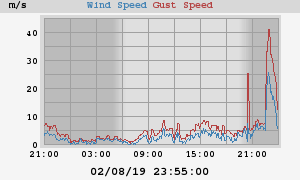
The wind carried garbage containers into parked cars.
And made everyone in the warmth of their homes thankful they chose not to go out that night.
After the storm, the Center 112 received numerous calls from citizens reporting fallen trees on the roads, while some reported that they were trapped in an elevator because some parts of the city briefly ran out of power, reported Slobodna Dalmacija.
Some facilities were left without roofs, and most of the calls came from Split, Solin, and Kaštela.
Many calls for help from the sea were also received Friday night.
“We have a lot of calls, and just in the area of Split we have reports of five accidents, and maybe 20 in the whole Adriatic,” said the Port Authority of Split on Friday. No injuries had been reported on Friday night, though more information will be known on Saturday morning.
The KulaKula festival was also held in Trogir on Friday night in Kamerlengo castle. The storm hit as local favorite Vojko V was on stage. The storm cut out the sound, but Vojko boldly continued his concert in an unplugged version.
However, the storm became worse and started to pick up chairs, umbrellas, equipment, and branches. The audience then began running away from the concert venue, and as one Dalmacija Danas reader said, there was a lot of panic on the way out.
Fortunately, the weather forecast for Saturday is looking much more favorable.
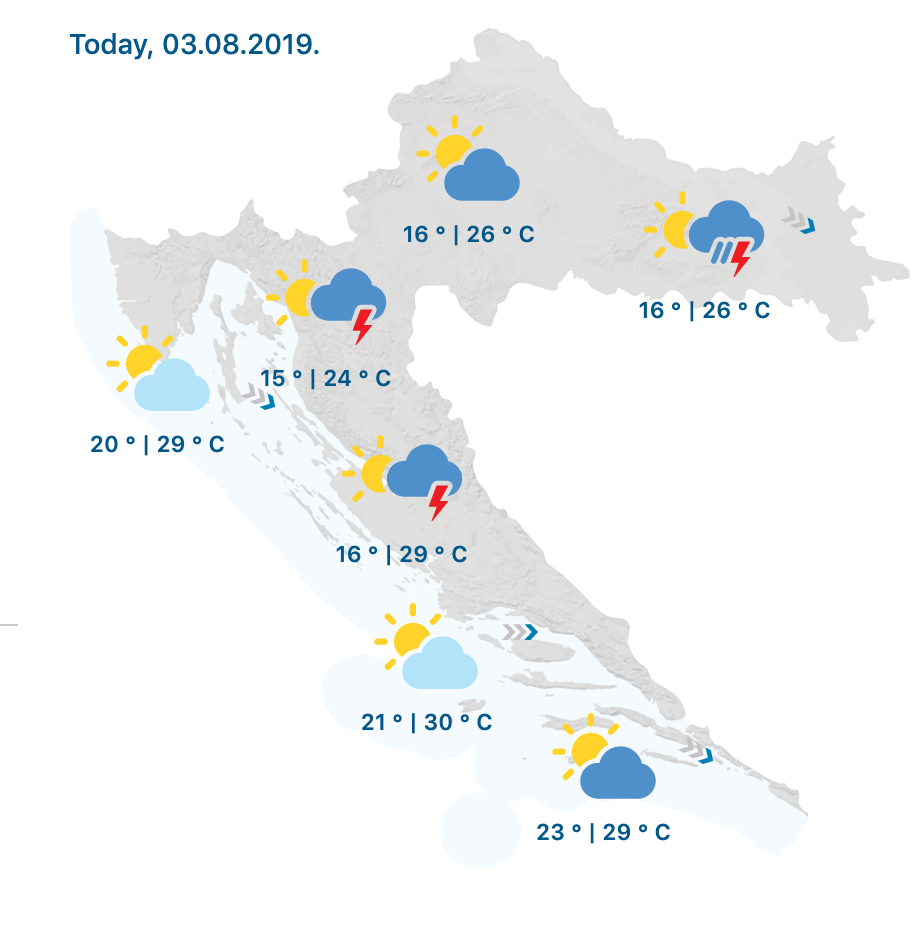
You can follow the weather report here.
To read more about lifestyle in Croatia, follow TCN's dedicated page.
VIDEOS: Istria on Red Alert, Roads Flooded in Dalmatia as Storm Hits Croatia
A summer storm followed by a torrential downpour and strong southern winds caused problems along the coast of Croatia on Sunday.
In Istria and Kvarner, the red Meteo alarm was switched on, while the rest of the coast is on the somewhat weaker, orange Meteo alarm, reports Index.hr on July 28, 2019.
"The weather is mostly cloudy and unstable with intermittent rain and thunderstorms. There can still be thunderstorms along the coast followed by intense winds, but also waterspouts, especially in Dalmatia. The wind is blowing weak to moderate to the southeast, on the most of the Adriatic to a moderate southwest, and in Dalmatia, there is a very strong southern wind. In the evening, the wind will weaken everywhere. The highest daily temperature is between 25 and 30°C,” read the DHMZ forecast for Sunday.
The summer storm particularly hit Šibenik-Knin County. The wind knocked down trees and thrust them onto the roads.
One sailboat was swept to the shore in Primošten, as was a small dinghy near Šibenik, and the wind carried it to the bridge, said the Center 112.
"The Harbor Commander has been informed about everything, and the main thing is that there are no victims, everyone is safe," said the watch operator.
In addition, Center 112 received numerous reports and requests to remove branches from the roads in Skradin, Pirovac, Kistanja, Srima and Šibenik.
In Kašić, a strong wind collapsed a tree through the wire of a pipeline and the villagers are having problems with electricity.
A short water spout flooded Poljička cesta in Split. A hundred meters of the road near the intersection with Ulica Bruna Bušića was completely flooded.
In the video, you can see how the road looked between the two Split hospitals.
The Blatine neighborhood in Split also saw fallen trees.
Hvar couldn't escape the floods, either.
Heavy rain fell all morning in the area of Imotski, and some thirty liters of rain per square meter is said to have fallen in two hours, which caused flooding on the roads.
To read more about news in Croatia, follow TCN's dedicated page.
Dalmatians Saving Croatian Population: More Births On Coast
In only eleven Croatian cities and 47 municipalities out of a total of 566, were there more births than deaths, but most children were born in the coastal counties.
As Morski writes on the 23rd of July, 2019, Croatia's demographic picture continues to be bleak, and what might seem like a dying nation is being kept above water mainly by Dalmatians, which act as a bright spot on the demographic map of this country, where, as mentioned, out of a total of 566 Croatian cities and municipalities, only eleven cities and 47 municipalities were there more births than deaths last year.
In 2018, Split-Dalmatia County had the largest municipalities and cities with a positive natural population increase, included are four towns, Kaštela, Sinj, Solin, and Vrgorac, and ten municipalities, Baška Voda, Bol, Dugopolje, Klis, Podbablje, Podgora, Podstrana, Postira, Prolog, and Zadvarje, all of which had more births than deaths. This has been proven by the latest data from the Central Bureau of Statistics, Večernji list writes.
As stated, the Croatian cities and municipalities with a positive natural increase are mostly coastal counties, in Split-Dalmatia, Zadar, Istria, with one continental Croatian exception - Međimurje County.
52,706 people died in 2018 in Croatia, and 36,945 babies were born, in as many as 492 Croatian towns and municipalities and the City of Zagreb, there was a population decrease and only five municipalities and cities had the same number of births and deaths.
Although 389 more babies were born in 2018 than in 2017, that's merely a drop in the ocean, and a worrying one at that, when it is a well known fact that Croatia had more than 7,500 more births back in 2009 than today.
Demographer from Ivo Pilar Institute, prof. dr. Nenad Pokos, points out that the number of live births compared to deaths was recorded in only 58 Croatian municipalities and cities, or just 10.2 percent of their total number.
''Of the positive examples in the first place, it's certainly worth mentioning the town of Sinj, where there were 15 more people born last year than died, while in 2017, there were 42 more deaths than births.
In Sinj, the number of live births is larger than it was 2015, by as many as 34 births, and then compared again to 2016 where there 25 births, so in Sinj's case, we can rightly say that it is one of the few places to have recorded a baby boom.
In the Split area, the number of municipalities and towns with a natural increase is higher as Solin, Kaštela, Dugopolje, Klis and Podstrana are located here, while in Dugi Rat there is an equal number of live births and deaths.
The number of places with natural population growth in the Zadar region (Biograd, Bibinje, Galovac, Pakoštane, Poličnik and Tkon) is relatively high, while once again, Zadar has a natural decline as it also did last year, although during the period between 2011-2017, there were 355 more births than deaths.
In the Rijeka area, the record holder for natural population growth is still the Municipality of Viškovo, where the younger population has been coming and settling for the past few decades due to the possibility of easier employment in the immediate vicinity, as well as lower land prices and cheaper living costs than in Rijeka itself.
In Omišalj, there are more births than there are deaths, which is due to the proximity of Rijeka, the Rijeka suburbs, and Kostrena, stated Pokos.
More than births than deaths have also been recorded by ten towns and municipalities in Istria County, but they are very low numbers because only Poreč and the municipality of Tinjan have more births, more precisely five more, than deaths.
Follow our dedicated lifestyle page for much more.
Sun Lounger Under Palm on Pelješac Beach 3X More Expensive?
According to a report from Poslovni Dnevnik on the 16th of July, 2019, the media in neighbouring Bosnia and Herzegovina reported on some news about a Bosnian tourist visiting Croatia who experienced a somewhat strange situation on the Pelješac peninsula, more precisely in Trpanj: to rent a sun lounger, you'll pay a reasonable 25 kuna, but if you want to put that sun lounger under a palm tree for some shade from the sun's harsh rays, then it costs three times more - you'll pay 75 kuna.
This story does seem a little odd, so Morski.hr tried to find out what was going on and whether or not the story truly is correct.
Trpanj's mayor, Jakša Franković, believes this is a pure fabrication because he just doesn't believe this is possible.
"I think it's just something someone made up, it's almost impossible, because the municipal council has issued two concessions for the rental of sun loungers, one to ''Plavi obrt za morski ribolov'' who own 36 of the sun loungers placed at that location in Trpanj, and ''Hotel Faraon d.o.o. Trpanj'', which owns 20 sun loungers on that same beach. They rent out sun loungers, not shade, and that's what they've been approved for. If this really is true, I'd like this to be sent to our e-mail address or to that of the Trpanj Tourist Board. If the guest used the sun lounger after having paid three times more for it for the above reasons, then I'd like to see that receipt,'' said Mayor Franković.
"If this honestly is true, then it's a kind of bad marketing trick, and the market punishes such unsuccessful jokes, and they can't know if everyone is joking or if they aren't. Mr. Jakov Begović (one of the concessionaires, op.a.) is otherwise inclined to making jokes. Recently, he wrote in front of his facility, ''Govorimo sve jezike osim vašeg'' (We speak all languages except yours). In my opinion, that's also one of those bad jokes that can also be misunderstood,'' added the mayor.
The owner: We're not charging for shade, we're charging for sun loungers next to the palm tree.
Jakov Begović, the owner of the otherwise well-known facility in Trpanj, told Morski.hr that he saw no issue with this.
"I don't see anything controversial about it, and it's not about shade, but because the sun lounger is standing next to the palm tree," he said.
"There are two palm trees and a table is placed next to them, and it's called a palmset. If the gentleman from Bosnia was used to seeing parasols advertised for rent for protection from the sun, then he wouldn't be upset about it. If people want to, people can rent sun loungers and then lie beneath them and use the shade of the chair!'' he concluded, clearly irritated.
Follow our dedicated lifestyle page for much more.
Best Memes of Summer So Far Thanks to Daily Dose of the Average Dalmatian
June 24, 2019 - Summer officially kicked off on June 21st, though we’ve been feeling it in Dalmatia since the beginning of June. And grateful, we are, that the summer is finally here after an unusually chilly (and rainy) May.
However, jumping from one weather extreme to the next seems to have taken its toll on those of us in Dalmatia, that is, if the hit satirical Facebook Page Daily Dose of the Average Dalmatian (Dnevna doza prosječnog Dalmatinca) has anything to do with it.
Maybe jumping from the biting bura to a 35 degree Celsius heatwave has messed with our heads, or perhaps it’s just part of our Dalmatian blood, but the summer has just begun, and we already have a world of Dalmatian humor to share.
We knew that summer was officially here when this was spotted at the supermarket.
But the water wasn't quite warm enough to swim in yet...
Croatia's lack of seasonal workers was clearly displayed when local chickens were used to take drink orders.
And Dubrovnik taxi drivers quickly realized they needed to learn Chinese to survive.
Tourists went to great heights just to fit into the last parking spot at the beach.
And we witnessed Croatian innovation in Dugopolje...
Though it seems we've forgotten how to count...
Or correctly display traffic signals.
We discovered a new air conditioning system for cars on Pag.
And taped umbrellas to our backs to ensure the sun didn't stop us from working.
But we still can't seem to get the traffic signs right.
But summer didn't really start until a visit from Moky, our beloved Mako shark, which made its way from Makarska to Primošten.
We loved Moky so much, we even tried to imitate him.
The foreign workers brought in needed some time to adapt to Dalmatian culture, and to realize that this leg of pršut isn't a place for handbags.
As June moved along, Pag struggled with spelling.
And our markets confused tomatoes and cucumbers.
But Split's latest tourist attraction allows you to dine next to garbage trucks.
Fortunately, we know what it takes to attract tourists.
Even if we don't know how to spell.
Welcome to summer in Dalmatia.
We set the trends.
We work hard.
We have your back.
You just make sure to follow the rules.
To read more about lifestyle in Croatia, follow TCN's dedicated page.
Dalmatia Moving Forward with Filipino Workers this Summer?
Just how many problems employers have finding workforce was demonstrated on Tuesday by the interest of employers in Dalmatia who sought information about Filipino workers and ways to hire them. Organized by the Croatian Chamber of Economy - County Chamber of Split and in cooperation with the Pasat agency, representatives of the Filipino employment agency Magsaysay International Corporaticon INC. were presented, reports HRTurizam on June 11, 2019.
"For 2019, more than 65,000 foreign workers were approved, which is twice as many than in the previous year. The odds are bigger than ever, the workforce is missing, and this is a problem not only affecting Croatia but also neighboring countries in the region. Therefore, colleagues from the FBiH and Montenegro Chambers are now in contact with us to share information on the possibilities and procedures for recruiting Filipinos workers,” said Croatian President of the Chamber of Commerce of Split, Joze Tomaš.
According to Antonija Bašićiz of ŽK Split, in the first half of the year, 60% of the quota has been used or will be, and said that most workers are missing in tourism and hospitality, construction and shipbuilding. Tuesday’s presentation is a continuation of a series of activities that the Croatian Chamber of Commerce in Split realized this year to support members in solving the problems of finding a workforce.
One of the largest recruitment agencies in the Philippines is Magsaysay International Corporaticon INC.
The director of the agency for the employment of seafarers 'Pasat d.o.o.', Ino Munitić, said he has the best experiences with Magsaysay, his longtime partner, and with the Filipino labor force.
"Given the great lack of labor in Croatia, Filipinos represent a quality, substitute workforce, and according to my experience, they are calm, quiet and working people. The process of granting Filipinos labor visas in Croatia takes about a month,” Munitić said.
The participants were interested in many details of employing Filipinos, such as the how long it’ll take to bring the workers overs, the length of their contracts, and their employment opportunities not only in tourism and hospitality, but also in other activities such as vineyards, quarries or, for example, installing lifts.
Goran Rihelj writes that thanks to the chronic lack of workforce in Dalmatia, employers in tourism are willing to take such measures and adventures. However, in the long run, this is certainly not good because, besides returning to the root of the problem - cheap labor, rather than quality workers from Asian countries cannot be ambassadors of our destination, as they do not help the local economy or plan to move here. But if we want cheap labor, then we will have such tourism - inexpensive, massive, seasonal, which means we have to reduce prices in all segments significantly.
Rihelj suggests that the only solution is to raise wages and working conditions in tourism, focusing on quality rather than mass tourism. On the other hand, Croatia has high VAT, high tax burden and tolls, and a short season… So, what’s the best solution?
To read more about travel in Croatia, follow TCN’s dedicated page.
Šibenik-Knin County Wins ''Mediterranean Climate Change Adaption'' Award
As Morski writes on the 31st of May, 2019, the fourth European Conference on Climate Change Adaptation was held in Portugal (Lisbon) from the 28th to the 31st of May this year, and Dr. Sanja Slavica Matešić, head of the Department of Environmental Protection and Communal Activities Šibenik-Knin County in Dalmatia partook.
A conference of this kind is held every other year, and this year's event was held under the slogan "Working together to prepare for change". The aim of the conference is to provide a dialogue between the various stakeholders of the academic community, the government and the economy on multiple aspects of adaptation to climate change.
It includes the promotion of communication and the exchange of knowledge between researchers, policy makers and professionals, as well as presenting integrated solutions and encouraging new activities, supporting ongoing efforts to increase coherence and synergy between disaster risk research and policy and practice, as well as discussing key challenges and solutions in cities.
The conference also presented its awards for Mediterranean adaptation to climate change. Šibenik-Knin County received the "Mediterranean Climate Change Adaptation Award" for its outstanding contribution to the area of adaptation to climate change, more specifically because of its integrated coastal zone management plan in Šibenik-Knin County, which places a special emphasis on climate change and variability.
Dr. sc. Sanja Slavica Matešić was handed Šibenik-Knin's award for its hard work and dedication to understanding and properly emphasising the threat of climate change. 28 candidates from 9 countries participated in the competition for the main prize, and in addition to Šibenik-Knin, counties in Portugal, Morocco, Jordan, Palestine and Lebanon presented their own respective projects.
The integrated coastal zone management plan of Šibenik-Knin County was presented by Ph.D. Sanja Slavica Matešić and Daria Povh Škugor.
Within the conference, special awards were awarded in three categories: "Development, Infrastructure and Construction", "Ecosystem and Natural Resources" and "Methods for Design and Public Policy". Šibenik-Knin County is also the winner of the "Methods for Design and Public Policy" award.
The aforementioned coastal plan is a type of new generation plan that only a few throughout the Mediterranean can boast of, and it's also the very first of its kind in the Republic of Croatia, bringing extra praise for Šibenik-Knin County.
Stay up to date by following our dedicated lifestyle page. If you're interested in seeing how Croatia protects its environment, give Total Eco Croatia a follow.


